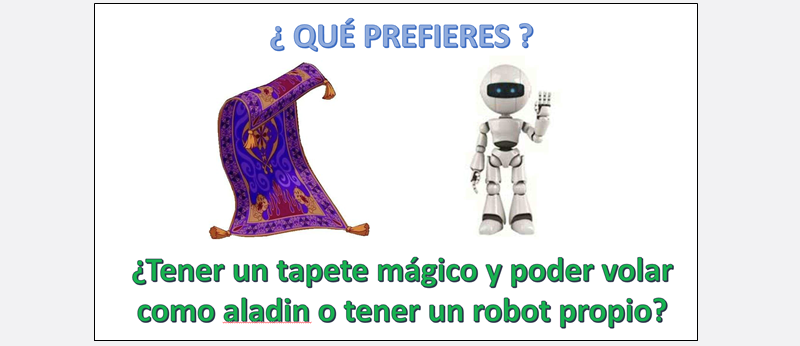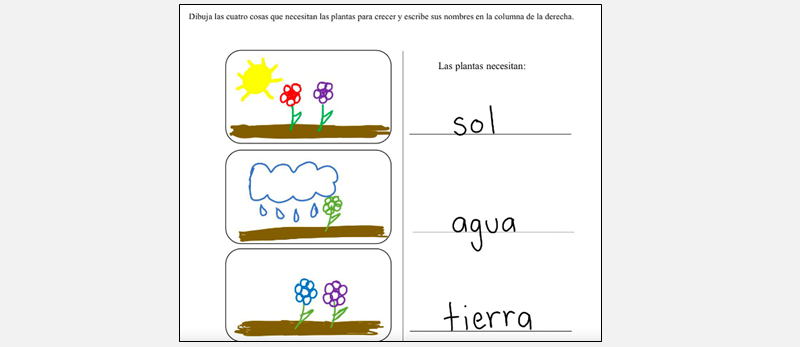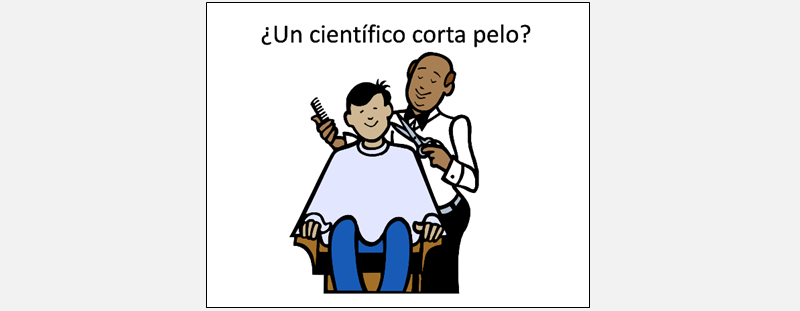Qué/What
WAYS WE CAN USE THE WORD(S)
ASK QUESTIONS: ¿Qué compraste en la tienda? (What did you buy in the store?) ¿Qué pelicula viste ayer? (What movie did you watch yesterday?)
CLARIFY: ¿Qué dijiste? (What did you say?)
JOKE: ¿Qué le dijo un techo a otro techo? - Techo de menos.
MAKE CHOICES: ¿Qué deberiamos escoger, azul o verde? (What should we choose, blue or green?)
For specific questions or more ideas regarding this core word activity sheet, please contact Maryvi Morales @ marygm12@gmail.com. Thank you!
Snack/mealtimes: The student can use ‘qué’ to ask their classmates what they brought to eat for snack/lunch, or if they want clarification on what their food item is. Students can say “¿Qué trajiste de comer?” (What did you bring to eat?) or “¿Qué es eso?” (What is that?).
Adults can model the word ‘que’ to ask students to make choices/pick something for snack time. For example, adults can say “¿Qué quieres comer, una manzana o una naranja?” (What do you want to eat, an apple or an orange?)
Circle: During the morning circle, adults can model the word ‘que’ by asking students different questions relevant to the day of the week, what they did over the weekend. Adults can ask “¿Qué dia es hoy?” (What day is it today?) or “¿Qué hiciste este fin de semana?” (What did you do this weekend?)
Activity Centers: Adults can model the word ‘que’ to ask students to make choices/pick an activity. For example, adults can say “¿Qué quieres hacer, pintar o leer?” (What do you want to do, paint or read?)
After school: Adults can prompt students to describe what they did at school today or what they enjoyed during their day e.g., ¿Qué hiciste hoy? (What did you do today?) or “¿Qué fue lo que mas te gusto de hoy? (What was your favorite thing about today?)
Games: While playing games, the student can be asked what they want to play. For example, an adult can ask “¿Qué quieres jugar?” (What do you want to play?)
Recess: For recess, the student can be given options and asked what they want to do during recess. For example, an adult can ask “¿Qué quieres hacer, jugar basquetbol, canicas, fútbol, o boliche?” (What do you want to do, play basketball, marbles, soccer, or bowling?)
¿Qué Prefieres? (What do you prefer?): During free play, students can ask each other what they prefer. It basically follows the concept of the Would you rather game? Adults can model the word and prompt students to use their SGD ask each other what they would prefer.

¿Qué pasaría si..? (What would happen if...?): This could be a fun game to play with the class. It consists of many different silly what if scenarios, for example, “¿Qué pasaría si los murciêlagos fueran gigantes?” (What would happen if bats were gigantic?) Adults can model the word ‘que’ while asking these different scenarios and prompt students to come up with an explanation of what they think would happen. Adults can also prompt students to come up with their own silly what if scenarios to ask the class.

¿Qué es? (What is it?): This could be a fun guessing game to play with the class. It introduces the core word ‘qué. Adults can model the word ‘que’ while asking the students “¿Qué es?” (what is is it?), when showing them a picture of the shaded animal. However, for students who are visually impaired, students and adults can use descriptions to support a student's understanding of what an animal might have “tiene una cola” (it has a tail). This activity also comes with two worksheets in the back if appropriate to use.

Here are some suggested books that can assist in teaching the core words:
- ¿Qué vamos a hacer hoy? By Kendra Smiley and Tina Sykes |Unite for Literacy
- ¿Qué deberíamos usar? By Racheal Martinez |Unite for Literacy
- ¿Qué elegirás? By Holly Hartman |Unite for Literacy
- ¿Qué puedo llegar a ser? By Dave Goodman and Ed Goodman |Unite for Literacy
Social Interactions: During any time of the day when students have free time, the student can be prompted to initiate a conversation with a peer by using a communication board to ask what they are doing, e.g., “¿Qué haces?” (What are you doing?)

Adults can collect a multitude of tactile items/objects (ex. Plants, uncommon fruits, etc.) that students may not be familiar with and have students look at the object it, feel it and the adult can pose the question “¿Qué crees que es eso?” (What do you think that is?). Adults and students can talk about different characteristics of the item as well.

¿Qué Hora es? (What time is it?): Students can learn how to tell time on a clock. There are 20 clocks in total, adults can have students work in groups to help each other identify what time it is. Adults can model ‘que’ by asking “¿Qué hora es? Vamos a trabajar juntos para averiguar que hora es...Muy bien, son las 4 de la tarde.”

¿Qué tienes en tu mochila? (What do you have in your backpack?): Students can talk with each other about what is in their backpacks and items that they think are absolutely important to bring to school. The adult can model the word by asking different students, “Franco, ¿qué tienes en tu mochila?,” and prompt other students to ask the same question. Adults can provide visuals to aid them and some examples.

¿Qué quiere decir? (What does it mean?): Students can learn about different popular Spanish sayings and their meanings. Usually, sayings' meanings have a lesson behind them or are applicable to our life. Adults can model ‘qué’ by reading to students the sayings and asking them “¿Qué quiere decir?” Students can work in a group, pairs or individually.

¿Que Comienza con? (What begins with?): Students can practice sound/letter correspondence of the vowels. This activity can be during small group or individually, given students the opportunity to find the name of the object in their SGD or if it is not already present, adding it for the activity.

¿Qué te gusta más? (What do you like more?): Through this activity, students can express their likes and dislikes. This activity can be done with the entire class, small groups, or individually. Adults can model ‘qué’ when asking the classroom what activity/thing they like more from the options. Adults can also prompt students to ask two peers, what they like more, “¿Francisco qué te gusta más? ¿Jugando pelota o bailando?
- ¿Qué Te Gusta Hacer? | Canciones Infantiles | Super Simple Español
- ¿Qué hora es? | Canciones Infantiles | Rockalingua
- Veo, veo, ¿qué ves? | Canciones Infantiles | Rockalingua
- ¿Qué escuchas? | Canciones Infantiles | Super Simple Español
- ¿Qué hay debajo de mi cama? | Canciones Infantiles | Little Angel Español
Art Activity- ¿Qué hay dentro de mi corazón? (What is it in my heart?): Through this activity, students can express what they hold in their heart. Adults can model ‘qué’ when asking the classroom what they hold in their heart and ask them to draw what inside or it could also be words/cut out pictures, color, whichever way they want to represent their ideas. Adults can also prompt students to ask their peers, what they have in their heart, “¿Violeta, qué hay dentro de de tu corazón?
Science Activity- ¿Qué necesitan las plantas para vivir (What do plants need to live?): Through this activity, students learn what a plant needs to survive. Adults can model ‘qué’ when asking the classroom what they think a plant needs to live/survive, e.g., “¿Qué creen que necesita una planta para vivir? (what do you you all think a plant needs to live?)

Science Activity- ¿Qué hace un cientifico (What does a scientist do?): Through this activity, students can learn what a scientist is/does and if they consider themselves scientists. Adults can model ‘qué’ when asking the classroom what they think a scientist does e.g., “¿Qué creen que hace un cientifico? (what do you you all think a scientist does?)

WORD WALL- Add the word, Qué on the Word Wall.
BOOK CREATOR: Students can create books, social stories, single page posters, record their voice. They can create a social story on when it is okay to ask their friend what they are doing or if their friend might look busy.
TARHEEL READER- Students can use Tarheel Reader to write a joke book, with some jokes including the word ‘que/what.’
READING and the Word Wall: Sound out the letters together. Have the students find the word on the AAC system.
WRITING and the Word Wall: Using a pencil or alternative pencil, have students try to type the word on the keyboard, adapted keyboard or write the word together.